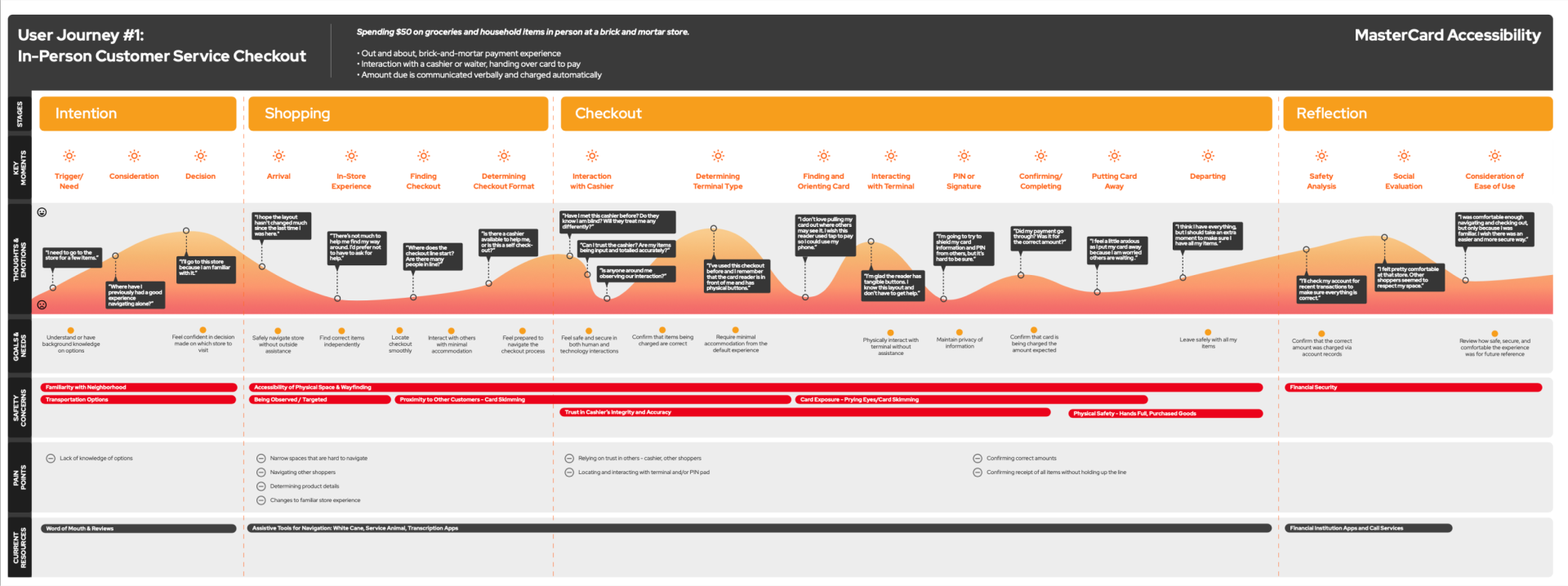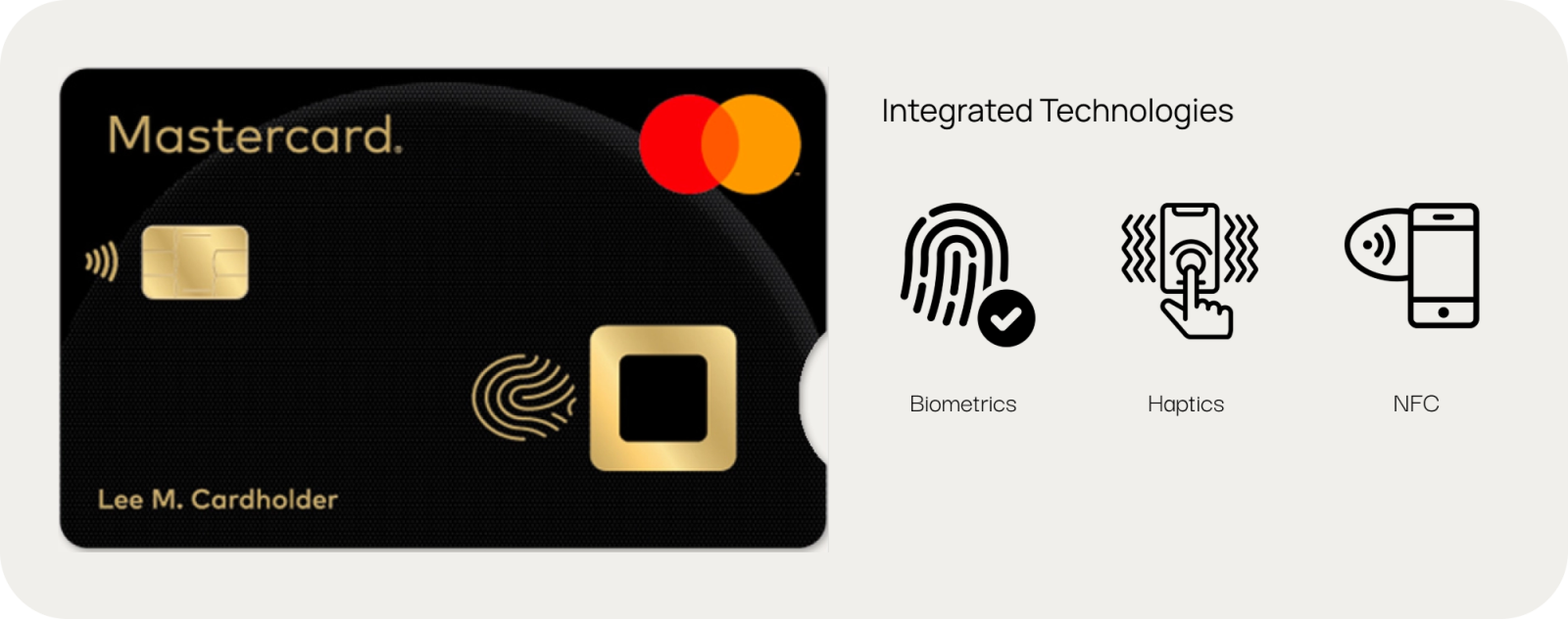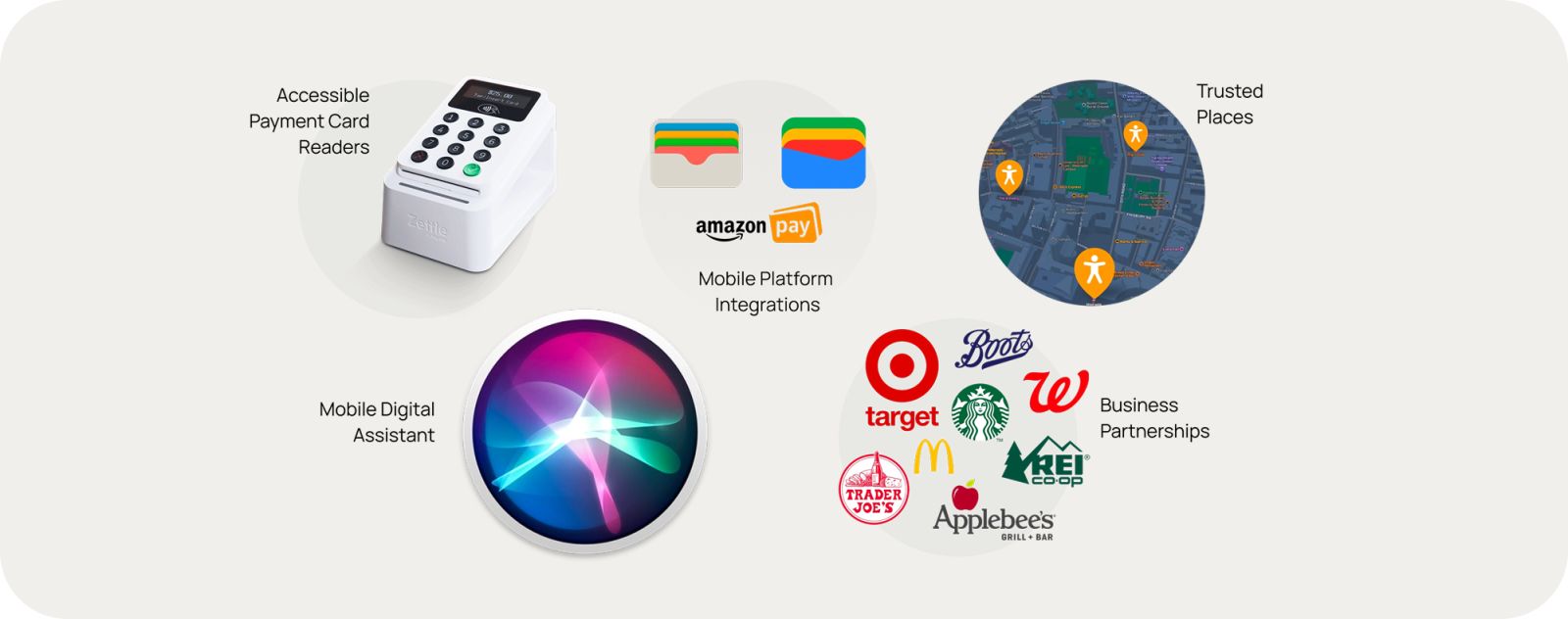Product Strategy
Mastercard Touch Card 2
Together with Mastercard, my team envisioned a way to enable visually impaired people to fully, independently facilitate their card purchase moments.
The ask
The Mastercard Touch Card was the first-ever payment card designed to assist the visually impaired. The first Touch Card featured distinctive notches, allowing tactile differentiation between credit, debit and prepaid cards.
Mastercard approached Razorfish to define and design the Touch Card’s successor.
Our goal was to envision a point of transaction experience supported by a technology ecosystem centered around implementable and emerging technology, empowering visually impaired cardholders to fully, independently conduct and facilitate their point-of-payment moments in universal contexts.
Note: This is a product strategy and alignment project defining a proposed consumer product and an end-user ecosystem in support of that product’s envisioned experience. As such, work is limited to UX and strategic outputs as the final solution is a WIP
Deliveries
- Product & experience research
- User journeys
- Product & experience strategy
- Technology ecosystem
Mastercard
Product & Experience Strategy
ECD, Experience Design (SVP)
2023

Challenge & Approach
The Touch Card 2’s goal is to maximize point of payment accessibility, fully enabling visually impaired shoppers to complete payment (minimizing assistance) across common point of payment situations: in-person dining, physical retail, and online shopping.
In order to paint a complete landscape for the next generation card platform required our team to define and detail all 3 user journeys. But, before we could detail those journeys, we needed to ground our perspectives in 3 areas:
Audience Insights
Understanding that security and privacy for our end-users are of primary importance, we needed to build a deep and intimate empathy for our target audience, with the goals to (1) never underestimate their capabilities in order to maximize their empowerment and sense of reward, and, (2) if possible, unlock enjoyment completing payment.
As part of discovery, we conducted several interviews, both with visually impaired end-users as well as organizations, such as the Royal National Institute of Blind People (RNIB) who advocate for accessibility in the United Kingdom.
Accessibility Guardrails
While accessibility standards exist and are executable for common digital on-screen experiences, we knew we were journeying into largely unregulated territory.
Still, if there was a way to unlock true independence for our users — especially against a myriad of payment platforms and processes — we were going to find the beginning steps to set that foundation.
Technology Insights
We knew we weren’t going to re-invent the wheel, especially with how far technology has come, both in physical size and scale of implementation.
Our primary goal with technology was to see what existing technologies we could utilize for Touch Card 2, so, in the purest sense, we were meeting our end-users where they were already living and moving.
An Output: User Journey

Outputs
Director’s Notes
-
Overseas Client Team
Our Mastercard client team was based in London, and as part of the charter of this specific project (via their location), we worked incredibly closely with the Royal National Institute for the Blind, a London-based non-profit heavily invested in utilizing technology to unlock doors for the visually impaired.
Additionally, a few colleagues and myself called upon friends in our personal and professional circles to provide discovery inputs, and feedback on our solutions for Mastercard. For me, this included an old college friend, April Dawson, Executive Director at the California Commission of Disability Access, a wonderful advocate within the California State Government for accessibility rights, services and organizations within the state.
-
Personal & Professional Skin in the Game
At Razorfish, I and a group of colleagues had also recently established the Accessibility Council, a Business Operations Group that was tasked with, 1) advocating that all the work the agency delivered either met or exceeded established accessibility standards in their intended market, and 2) explored opportunities to innovate with accessible experiences and communications as a primary goal.

